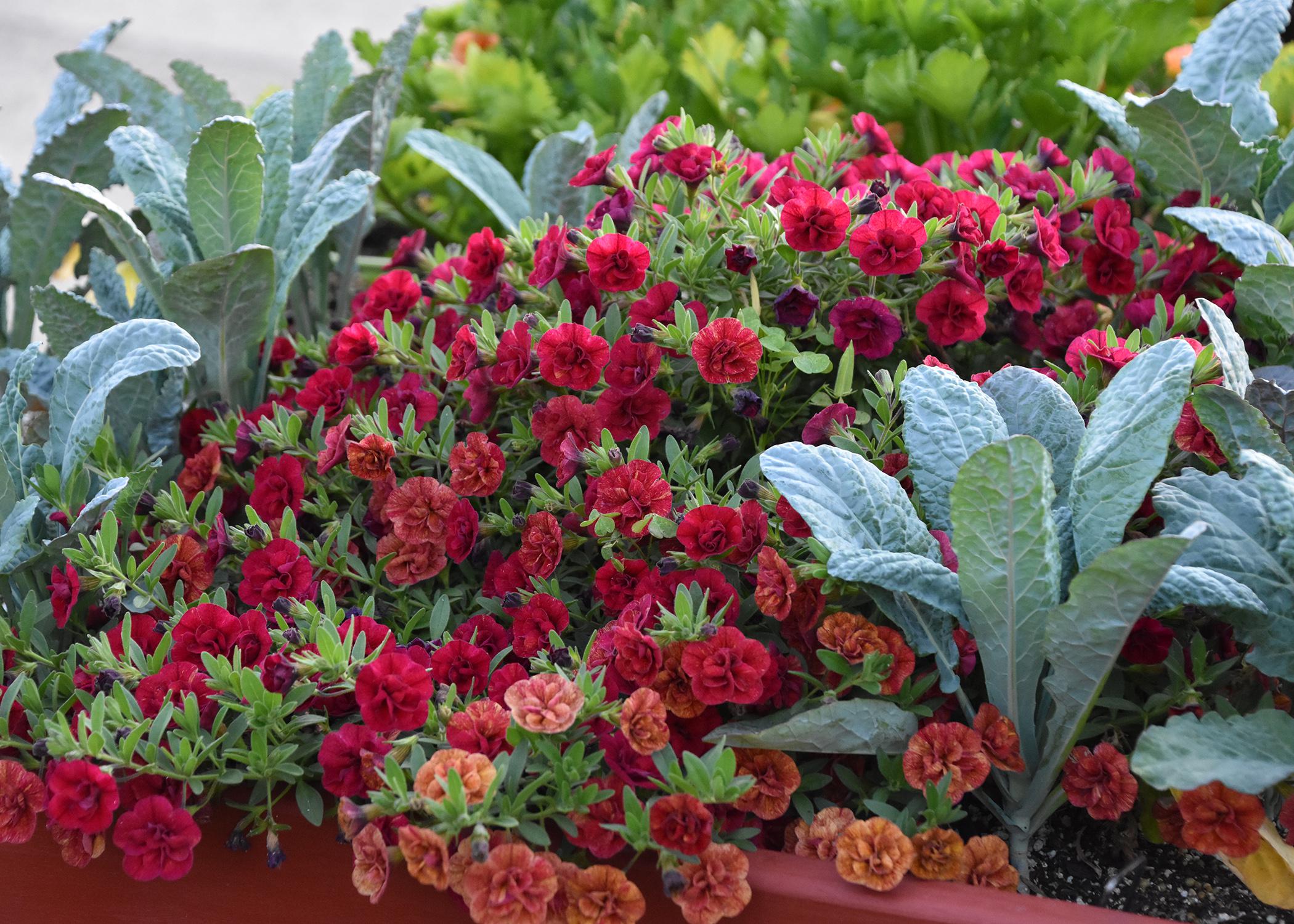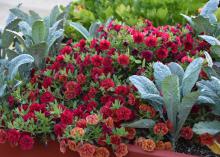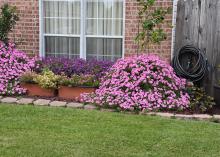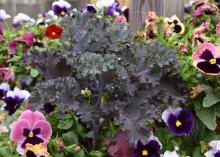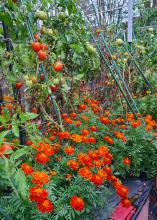Information Possibly Outdated
The information presented on this page was originally released on March 7, 2022. It may not be outdated, but please search our site for more current information. If you plan to quote or reference this information in a publication, please check with the Extension specialist or author before proceeding.
Mix edibles, ornamentals for a creative landscape
When planning my home garden and landscape, I love to combine different plants in containers. My basic practice is to follow the thriller, filler and spiller recipe.
The thriller plants are upright and grow taller than the rest, adding interest and excitement. The spillers are low-growing plants that sprawl out and over the container edges. Filler plants have rounded and mounding growth habits that fill in the gaps between thrillers and spillers.
The beauty of this recipe is that you can leave one of the parts out of the planting.
I leave the filler out of many of my plantings to make room for something else. I like to plant French marigolds underneath tomatoes, or I place classic Vista Bubblegum Supertunia underneath my various citruses growing in 25-gallon containers.
While I primarily use this simple recipe for combining plants in containers, it is also practical for creating different combinations in landscape beds or along walkways.
Most gardeners combine like plants, so they primarily use just ornamentals for their flowers or foliage. However, one great idea has been around forever, but people have been slow to adopt it. That is to create an edible landscape, combining edibles with ornamentals.
I think the reluctance to combine edibles and ornamentals is a garden paradigm, similar to the idea that tomatoes must be red or that vegetables must be grown in the backyard.
Combining veggies with flowering planting opens up another avenue for home gardeners to be creative.
The size of your gardening space shouldn’t be a limiting factor. Porches, patios and even balconies are perfect locations to show off pretty, edible plants and flashy flowers. In fact, just growing veggies in containers is a great way to enjoy an easy, little kitchen garden.
Brie Arthur is one of my great horticulture friends, and her book, “The Foodscape Revolution,” is a fantastic blueprint for combining food, blooms and foliage for increasing curb appeal and helping to reduce your grocery bill. When you plant with the idea of combining vegetables, herbs, flowers and foliage, you create a garden space for maximum production of edible goodness combined with beauty.
We’re quickly racing toward the warm season, and that means home gardeners will soon grow lots of summer favorites. Here are my recommendations that would be perfect for a big combination container.
One good thriller has to be a cherry tomato like the red Sweet 100. For a little more interest, consider the bright-yellow Patio Sunshine. The fillers are basil, either the green Genovese or the dramatic, nearly black Amethyst Improved. Or you could use a brightly colored coleus to add interest. The spillers are nasturtium for late spring and early summer or lemon verbena.
Combining edible and ornamental plants in containers or the landscape will only be limited by your imagination.
Visit your favorite, independent garden center and group different plants together to see how they look. Think of this as a test drive before you take them home to plant and enjoy in your garden.

